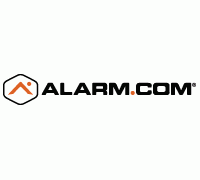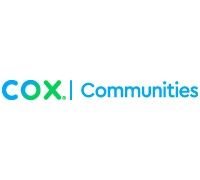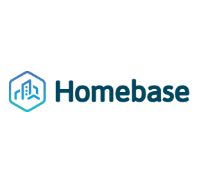By Wojtek, Chief Technology Officer, SoftAtHome
Note: this blog has originally been posted on Videonet : http://www.v-net.tv/cloud-tv-the-ultimate-solution-for-service-providers
I sense a lot of excitement in the market regarding the advantages that a combined Cloud / Smart TV approach without an STB can bring service providers. But I wonder about possible negative impacts that such a shift could have on the operational aspects of the service provider’s business, i.e. an OPEX escalating out of control.
This is especially true for Broadband Service Providers (BSPs) offering TV services. Roughly speaking, the idea consists of providing a BSP client application running in the Smart TV that interacts with a cloud-based platform. The main expectation is that this will allow BSPs to reduce CAPEX by eliminating the need for the STB – a dedicated device currently provided by the BSP to customers in order to deliver quality TV services. This expectation seems really compelling at first sight.
Device management complexity in the field.
Currently, with devices such as STBs and/or Home Gateways that are provided and fully controlled by the BSP, usually only a few different variants of device are present in the field. BSPs’ systems, processes and practices are usually scaled and adapted only for this low degree of device diversity.
If the BSP relinquishes control over devices, they must cope with an enormous range of device models (TV sets) in the field and even more numerous software variants. This range continually increases as new models appear on the market every year – each major TV manufacturer adds several (usually 10+) new TV models in each significant market every year.
Complexity of software development and maintenance.
The hugely increased number of device variants described above also has an important negative impact on the number of client application software versions that have to be developed, validated and maintained by the BSP. This impact will increase over time with the growing number of different TV models.
Unclear responsibility.
The software on a CE device such as a Smart TV is partially provided by the CE manufacturer and partially by the BSP. Manufacturers typically provide a Smart TV’s main “firmware” or “middleware” while the BSP provides its client application. Here the responsibility for the device functioning properly becomes unclear and can turn into a source of operational problems. Who, for example, must ensure that a new Smart TV firmware, that is automatically updated, has no impact on the BSP’s service delivery? And when such impacts occur, who should fix the issue? Whose customer service should be flooded by customer calls?
Management of devices’ obsolescence.
Today, the BSP can decide at any moment that a given STB model in the field should be replaced by a newer one. Such a replacement is usually painless to the end-customer and a major OPEX advantage can be achieved by the BSP by eliminating:
– the need for STB’s software maintenance,
– an obsolete service platform if it only serves the oldest STB models,
– specific handling that may be required by an obsolete STB model.
But how can such OPEX optimizations be realized when the BSP’s service is delivered directly to the customer-owned TV set?
When the customer buys the TV set, the BSP would typically sell a promise of delivering services to this particular TV set. However several years later the TV set may no longer be supported either by the manufacturer or the BSP but the customer may still be happy with it. How can the BSP explain that a new TV set must be acquired? An alternative is for the BSP to pay for it …
Innovation deployment barrier.
Devices such as STBs and HGWs that are provided and controlled by the BSP enable innovation that is independent of the pace of innovation in the CE devices in the field. A good recent example is the use of the more powerful video codecs such as HEVC to reduce the bandwidth required for content delivery. Unfortunately, in a pure Cloud/Smart TV approach the benefits of such a codec cannot be obtained because CE devices in the field don’t support it yet. By contrast, a BSP-provided device can receive HEVC streams and adapt them to the requirements of the existing TV sets if necessary. Other examples of innovation advantages can also be found in the past, for example in the change of connectivity standards such as SCART to HDMI.
Standardization could be a way forward.
Some of the potential issues mentioned above can be alleviated if all market stakeholders undertake standardization efforts. Unfortunately, in spite of formal standardization efforts such as those by the OIPF for example, no market standard has yet seen mass adoption. For now the business objectives and interests of the different ecosystem stakeholders are probably just too divergent, especially in the area of content protection where proprietary solutions are dominant.
In the meantime dongles are probably in the short term future.
In any case, standardization can only alleviate the problems but not eliminate them totally. So the right question is whether the possible negative impacts on the BSP’s OPEX can be overcome by the CAPEX reduction. We don’t yet have necessary figures to prove this, but I feel that miniaturization of the STB, such as with an HDMI-dongle, could hugely reduce the STB CAPEX. And in this case the operational drawbacks of the Cloud/Smart TV approach would make it uncompetitive compared to a miniaturized STB whose low CAPEX may give it shorter lifecycles more compatible with the user expectations set by the mobile device industry, where a two year old phone will soon be an antique.
So in the end, I even wonder whether the future really belongs to Smart TVs at all when dongles potentially offer so many more advantages.
This challenging and exciting topic among others will be discussed at the Connections Europe panel discussion that will take place on November 18, 2014 in Amsterdam.
Next: iYogi Joins CONNECTIONS Europe Next Week in Amsterdam as Sponsor
Previous: Making TV More Social is an Important Next Step: Insights from Watson Nordic















